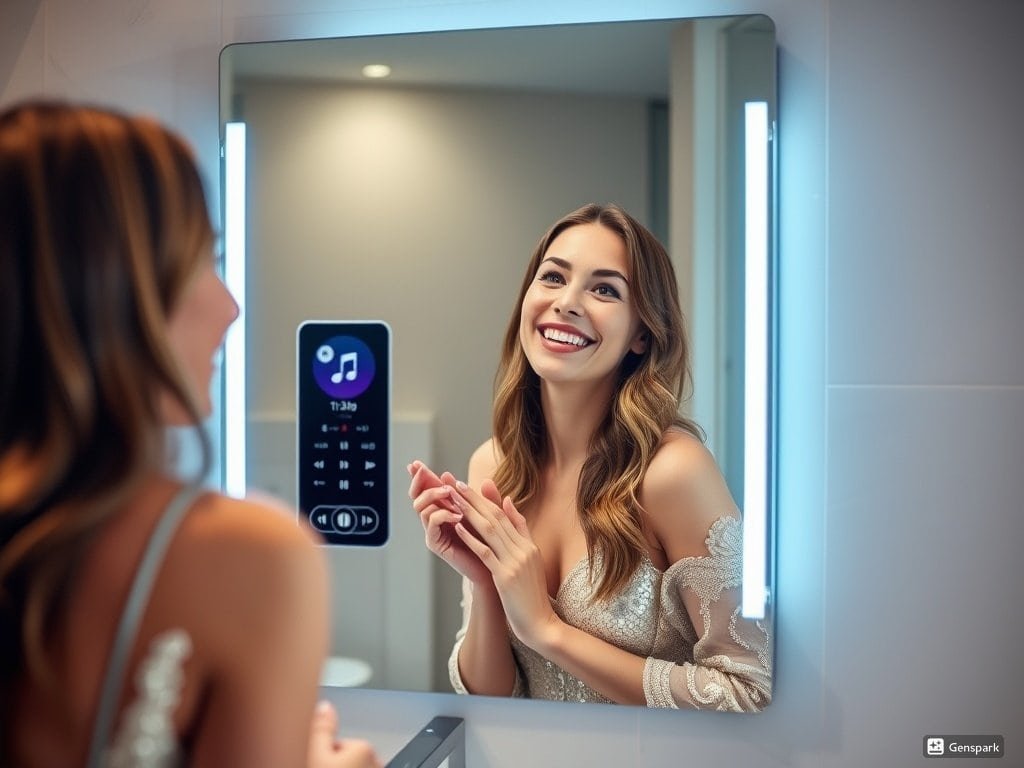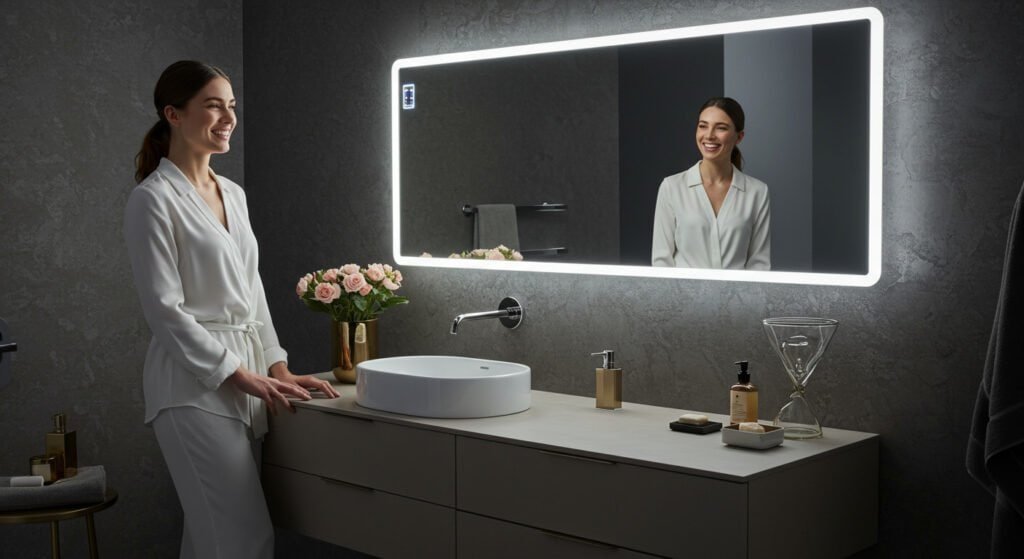|
מקבל את שלך אודיו טריניטי שחקן מוכן ...
|
Picking the wrong mirror shape can make a room feel unbalanced or visually confusing. Many homeowners struggle with this decision, often resulting in mirrors that detract from their décor rather than enhancing it. The right mirror shape can dramatically transform your space, reflecting light and creating the ideal atmosphere.
To choose the right mirror shape, consider your room’s size, סִגְנוֹן, and function. Rectangular mirrors work well in most spaces, while round mirrors soften angular rooms. לחדרי אמבטיה, choose shapes that complement your vanity, and for bedrooms or entryways, full-length mirrors with shapes that match your décor provide functionality and style.
Let’s explore how different mirror shapes can enhance your space and which options might work best for your specific needs.
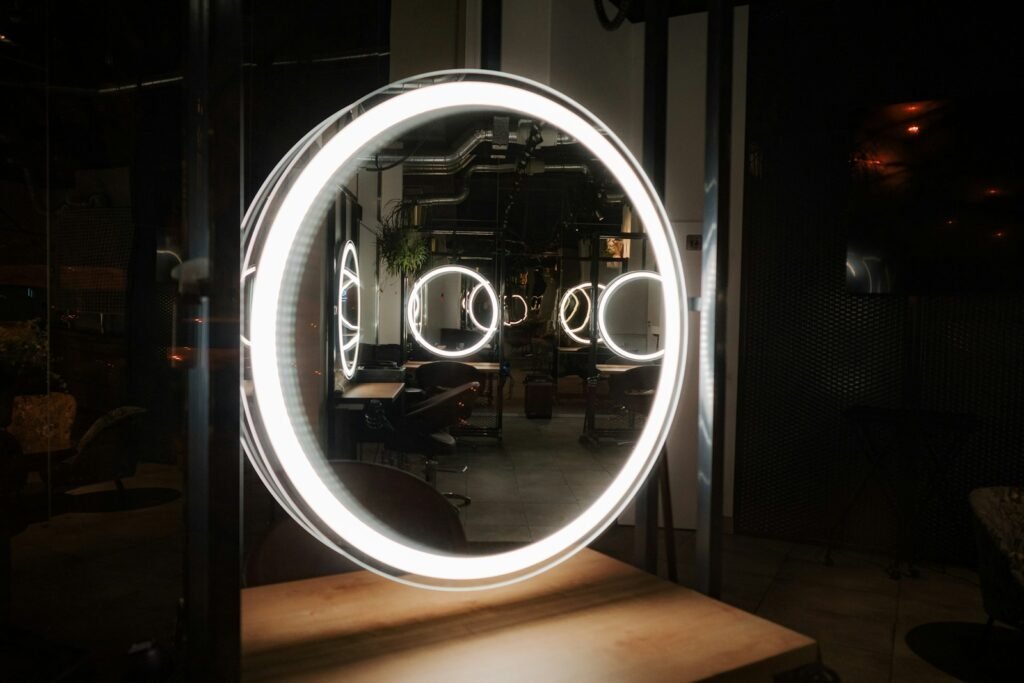
How Does Room Size Affect Mirror Shape Selection?
The dimensions of your space significantly influence which wall mirror shape will look most appropriate and function optimally within your room.
Small rooms benefit from strategically placed mirrors in shapes that create an illusion of space. Large rectangular or oval mirrors can make narrow rooms appear wider, while tall, narrow mirrors can enhance ceiling height in spaces with low ceilings.
When working with limited space, consider the proportions carefully. An oversized mirror with an elaborate shape might overwhelm a small room, while a tiny mirror would look out of place in a spacious area. For compact spaces, clean-lined square or rectangular mirrors often work well, as they maximize reflective surface without visually cluttering the area.
In contrast, larger rooms can accommodate more dramatic shapes like sunburst designs or irregular shaped mirrors that serve as statement pieces. Remember that the shape should complement your room’s dimensions – a horizontal rectangular mirror works well above wide furniture pieces, while vertical formats enhance rooms with higher ceilings.
Which Shape Mirror Makes a Room Look Bigger?
Strategic mirror placement with the right shape can create the illusion of more space in even the smallest rooms.
Large rectangular or oval mirrors positioned across from windows reflect natural light and create the impression of doubled space. Wall-to-wall mirrors or full-length mirrors with simple shapes can make ceilings appear higher and rooms feel more expansive.
The reflective quality of mirrors naturally enhances spatial perception, but certain shapes amplify this effect. Circular mirrors softly reflect light in all directions, creating a more open feel. Rectangular mirrors, particularly when placed horizontally, can make walls appear to extend further than they actually do.
For maximum space-enhancing effects, consider large-scale wall mirrors that stretch from floor to ceiling or occupy a significant portion of the wall. Even irregular shaped mirror designs can create depth, especially when they reflect interesting architectural features or light sources.
Mirror shape design matters particularly when trying to visually expand a room – curved shapes like ovals tend to create a more flowing, open feel while angular shapes like diamonds or squares create more defined reflections that can help organize the visual space.

What Mirror Shapes Work Best for Different Interior Styles?
Different interior design styles naturally pair better with certain mirror shapes that complement their aesthetic principles.
Contemporary spaces often benefit from clean-lined square or rectangular mirrors, while traditional interiors may call for ornate oval or round mirrors with decorative frames. For bohemian or eclectic spaces, consider irregular shaped mirrors or uniquely designed pieces that add visual interest.
The mirror shape should harmonize with your overall design language. Modern minimalist spaces typically pair well with simple geometric shapes like circles or squares with thin frames or frameless designs. Traditional or classic interiors often benefit from oval shape mirrors or rectangular mirrors with elaborate frames that echo architectural details.
For rustic or farmhouse styles, consider distressed rectangular mirrors or round mirrors with wooden frames. Art deco spaces shine with diamond shape mirrors or geometric designs, while bohemian interiors welcome heart shaped mirrors or asymmetrical designs. Industrial spaces often pair well with rectangular mirrors featuring metal frames, while coastal themes complement round mirrors reminiscent of portholes or wave-inspired irregular shapes.
Which Shape Mirror is Good for Home?
When selecting mirrors for your home, different spaces call for different shapes based on both functional and aesthetic considerations.
For entryways, vertical rectangular or oval mirrors allow for quick full-body checks before leaving. In living rooms, statement mirrors in shapes that complement your furniture create focal points. Dining rooms benefit from horizontal rectangular or round mirrors that reflect chandelier light.
Bedroom mirrors should serve both decorative and practical purposes. Full-length mirrors are essential for dressing areas, and these can range from classic rectangular shapes to more contemporary irregular shaped mirror full length designs.
For hallways, consider longer, narrower mirrors that enhance the sense of space without protruding into walkways. Home offices benefit from mirrors that provide quick appearance checks before video calls – often smaller square or round shapes positioned at eye level.
Children’s rooms can incorporate playful shapes like heart shaped mirrors or cloud-shaped designs that add personality while remaining functional. Remember that the shape should complement the room’s purpose – bathrooms need mirrors positioned for grooming, while decorative spaces can showcase more artistic or unusual shapes.

How to Choose the Right Mirror for Your Bathroom?
Bathroom mirrors require special consideration due to their frequent use and exposure to humidity.
Bathroom mirror shapes should complement your vanity style and size. Rectangular mirrors work well with most vanities, while round or oval mirrors soften angular countertops. For double sinks, consider either two matching mirrors or one long horizontal mirror.
Beyond basic shapes, consider specialized bathroom mirror styles like medicine cabinets with mirrored doors that provide both reflection and storage. LED-integrated mirrors have become increasingly popular, with shapes ranging from standard rectangles to more decorative oval or rounded rectangles. For spaces where humidity is a concern, look for mirrors with anti-fog features.
In smaller bathrooms, mirror shape can significantly impact the perceived space – a substantial rectangular mirror extending beyond the vanity can create the illusion of a larger room. Some contemporary designs feature mirror shapes for bathroom use that incorporate innovative features like built-in magnification panels or adjustable components, combining functionality with modern aesthetics.
Are Round or Rectangular Mirrors Better?
The debate between round and rectangular mirrors comes down to both aesthetic preferences and practical considerations for your space.
Round mirrors create a soft, flowing effect that can balance rooms with many angular elements. Rectangular mirrors typically offer more reflective surface area and can be more practical for grooming. Both shapes have their place in good design, depending on your needs.
The rectangular mirror has traditionally been the most common wall mirror shape due to its efficiency and versatility. It maximizes reflective surface area and fits well with standard wall dimensions. מראות עגולות, אוּלָם, have gained tremendous popularity in recent years for their ability to create a softer, more organic feel in spaces dominated by straight lines and corners.
They can serve as a visual counterpoint in rooms with rectangular furniture and doorways. The choice often depends on what other shapes dominate your space – if you have many angular elements, a round mirror can provide welcome contrast.
If your space features numerous curved elements, a rectangular mirror might create better balance. Each shape also creates different framing effects – round mirrors frame the reflection in a more focused, intimate way, while rectangular mirrors capture wider panoramas.
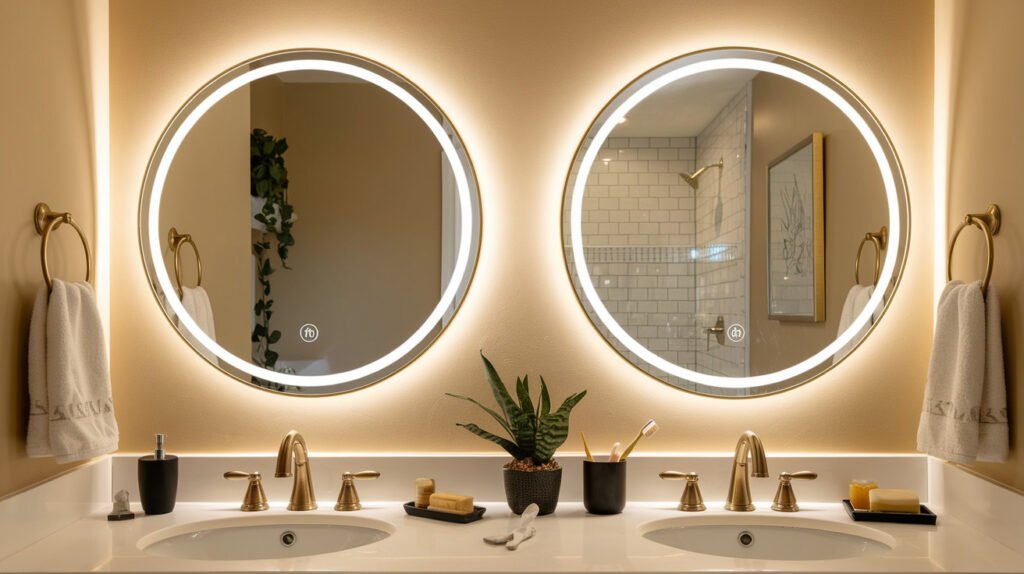
Does the Shape of a Mirror Matter?
The shape of your mirror significantly impacts both its functional effectiveness and its contribution to your overall design scheme.
Mirror shapes influence how light is reflected, how much of a room is captured, and how the mirror integrates with surrounding décor. Beyond aesthetics, shape affects a mirror’s practical utility – certain shapes are better for full-body viewing, while others excel at reflecting light.
Different shapes of mirror create distinct visual effects. Round mirrors soften spaces and create a sense of movement, while rectangular mirrors provide stability and structure. Oval mirrors combine elements of both, offering a balanced middle ground. Beyond these basics, more unusual shapes like hexagons, octagons, or irregular organic shapes can become artistic statements in themselves.
The shape also affects the mirror’s interaction with other elements in your space – a mirror shape design should complement rather than compete with artwork, furniture, and architectural features. In rooms with distinctive architectural elements like arched doorways or windows, mirrors that echo these shapes create visual harmony.
The shape also influences how the mirror functions within the feng shui of a space – mirrors with softer edges are generally considered more harmonious, while sharply angled mirrors can create more dynamic energy.
What is the Most Accurate Mirror Shape?
When it comes to reflection accuracy, the shape of your mirror does impact how faithfully it reproduces your image.
Flat mirrors of any shape provide accurate reflections, but larger mirrors with minimal distortion at the edges give the most comprehensive view. Square and rectangular mirrors typically offer the most distortion-free reflective surface area.
While all properly manufactured mirrors reflect accurately, the perception of accuracy can vary based on shape. Larger mirrors with straight edges tend to cause less visual distortion simply because they provide more consistently flat reflective surface.
מראות עגולות, especially smaller ones, can sometimes create a slight fish-eye effect near their edges, though this is usually minimal with quality products. Mirror diamond shape designs can create interesting visual effects but may not provide the most accurate full-body reflection due to their angular nature.
For the most accurate reflection, look for mirrors with minimal frame intrusion and high-quality silvering across the entire surface. Precision-cut edges also contribute to reflection accuracy. For specialty uses like makeup application, consider that oval shape mirrors with proper lighting provide excellent accuracy for facial features while still maintaining an elegant design aesthetic.
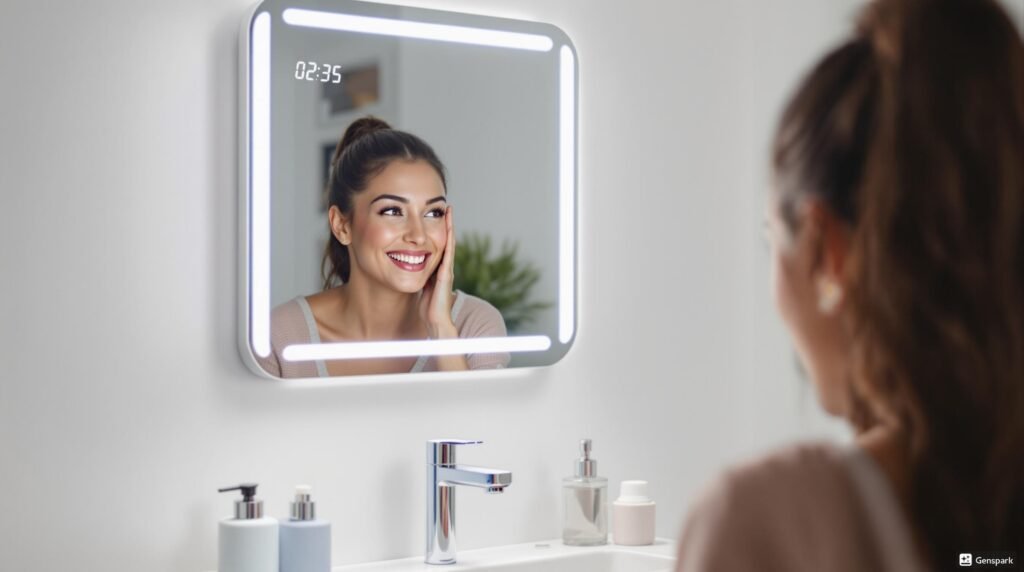
What Makes a Mirror More Flattering?
The quest for a flattering reflection involves more than just shape, but shape certainly plays a significant role.
Slightly convex mirrors can create a slimming effect, while properly lit oval or rectangular mirrors positioned at eye level tend to be most flattering. Round mirrors with warm-toned frames can soften facial features.
The most flattering mirrors combine appropriate shape with optimal lighting. Oval mirrors are often considered the most flattering shape for face reflection because they complement the natural oval shape of the human face. Round mirrors can also be flattering as they have no sharp corners and create a softer framing effect.
Rectangular mirrors provide a more comprehensive view but may not focus the reflection as effectively as oval or round shapes. Beyond shape, slight convexity can create a subtle slimming effect, though excessive curvature will distort proportions unnaturally.
The mirror’s frame color and material also impact how flattering the reflection appears – warm-toned frames like bronze or gold cast a more flattering light than stark white or silver frames. For maximum flattering effect, consider LED-integrated mirrors that provide even, shadow-free illumination across the face.
How to Customize Mirror Shapes for Unique Spaces?
Custom mirror shapes offer solutions for challenging spaces and opportunities for unique design statements.
When standard shapes don’t suit your needs, consider custom-cut mirrors designed specifically for your space. Irregular shaped mirrors can be tailored to fit unusual wall areas or to create distinctive focal points that reflect your personal style.
Custom mirror shapes allow you to address specific design challenges while expressing creativity. For awkward corners or angled walls, custom-cut mirrors can transform problematic spaces into design features. Specialty glass companies can create nearly any shape imaginable, from complex geometric patterns to organic, flowing forms.
The customization process typically begins with a template or precise measurements of your space. Computer-aided design technology allows for extremely precise cutting, even for complex irregular shaped mirrors. Custom mirrors are particularly valuable in historic homes with non-standard architectural features or in ultra-modern spaces where unique design elements are desired.
When considering custom shapes, remember that extremely complex forms may increase costs significantly. For more affordable customization, consider combining standard shapes in creative arrangements or selecting from a manufacturer’s extended range of unusual pre-made shapes.
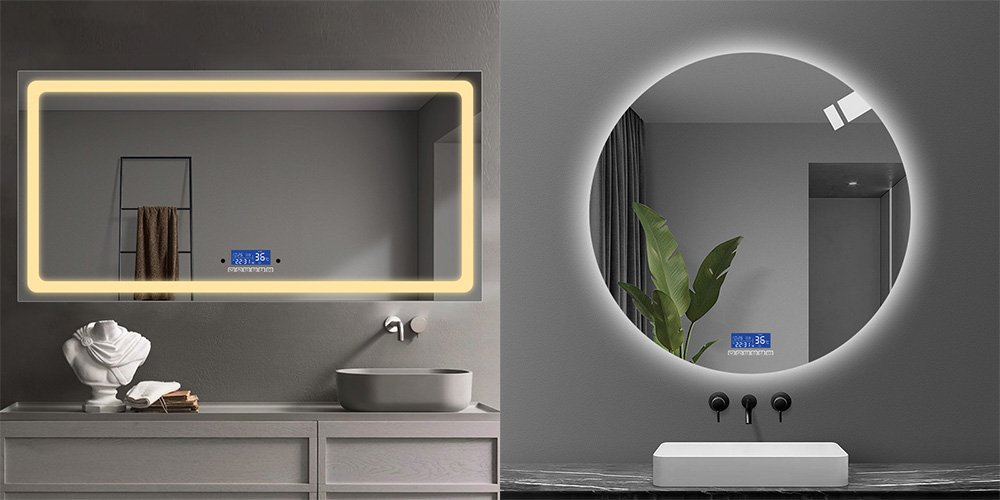
מַסְקָנָה
The right mirror shape can transform your space both functionally and aesthetically. Consider your room’s size, סִגְנוֹן, and purpose when selecting among different shapes of mirrors. Whether you choose classic rectangular, soft oval, or unique irregular shapes, the perfect mirror awaits.
- To learn how to pick the right bathroom mirror click here.
- To learn how to install a mirror choose here.
- To learn how to pick the right size mirror click here.
- To learn how mirrors are made click here.
- Click here and you will learn why we look better in mirrors.
- Click here you will learn about the TOP 10 led mirror manufacturers for 2024.
- Click here to find out Why doesn’t my vanity mirror light come on?
- Find out How Tall Should Bathroom Mirror Be?Click Here
- Click here if you don’t know how to clean your mirror
- To find out how to fix Touch Sensor Mirror Not Working click here

